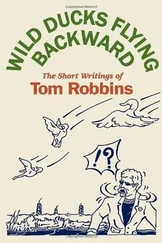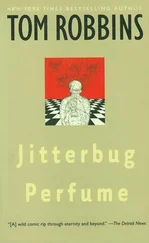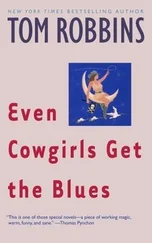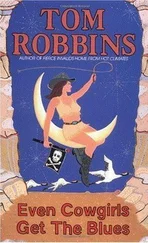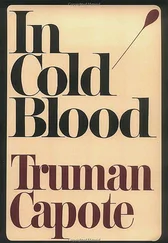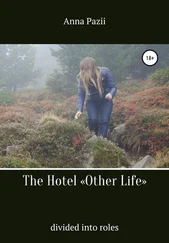Hargrave was now half military academy, half civilian prep school, and its postfire year passed unsteadily for everyone involved. It did pass, of course, and at graduation exercises on the final day, I found myself summoned by name three times to the front of the assembly: once to receive a diploma; once to accept a Quill and Scroll award, given to cadets who had made exceptional contributions to the school newspaper; and lastly to be presented the coveted Senior Essay Medal, which I’d won not for an essay but a short story entitled “Voodoo Moon,” about some weird goings-on in the Louisiana swamps. The name of no other graduate was called more than twice that day, most only once, and my triple honors served me particularly well since the previous evening I’d smashed in the right front fender on my father’s brand-new Chevrolet sedan, having skidded into a tombstone while joyriding through a local cemetery. Daddy’s anger, his disappointment, was naturally, fortunately, tempered somewhat by pride in my achievements. So it was that neither for the first time nor the last my verbal mojo, my knack for the written word, served to save my reckless ass.
Yesterday (18 November 2011), police in Los Angeles announced that after thirty years they were reopening their investigation into the demise of Natalie Wood. She had died in the waters off Santa Catalina Island during or after a party aboard a yacht, and at the time cause of death had been given as drowning while drunk. Now the circumstances were being reexamined and the news prompted my paramour to ask if my long-ago Natalie-inspired spiritual awakening, described earlier in these pages, had been an example of satori. I replied, “Close but no sitar.”
It might have been a passable pun except for one cross-cultural flaw: a sitar is an East Indian musical instrument while the term “satori” is Japanese. Usually defined as “sudden enlightenment,” satori is how Zen adepts refer to a spontaneous lightning strike of total, all-encompassing understanding. It most often follows many years of study and meditation, although the bolt of unlimited awareness has been known to wallop novices as well. Excluding that Natalie Wood episode, which was emotional and heart-centered, bypassing the intellect, I’ve experienced satori twice in my life, both times ignited by the most unlikely of sources and neither producing, except in capricious, barely perceptible ways, lasting results.
In 1966, I was renting a spacious apartment — seven rooms and bath — for fifty bucks a month. Why so cheap? Situated in an industrial area of Seattle, the apartment occupied the second story above a machine shop. Apparently, few renters considered that a desirable location. I, on the other hand, found it as appealing as a Manhattan penthouse.
The shop manufactured gears. Gears have to be ground. So, rather than a cacophony of clanking and banging, the noise from below my quarters was a low, slow, steady, grinding hum, not unlike the turning of the screw on a ship. It was soothing, comforting, and even kind of romantic; a perfect sound track for both lovemaking and a good peaceful sleep. On those occasions when the gear works had a rush order that compelled it to grind around the clock, I experienced difficulty in getting out of bed in the morning. I could have blissfully slept all night and all day. And sometimes when I did force myself to arise, I’d walk to the window, half expecting to see expanses of ocean and, in the distance, a silhouette of, say, Tahiti — or maybe Santa Catalina, whose waters would eventually swallow Natalie Wood.
Nobody wants influenza, but when I was hijacked by a virus in January of ’66, I took consolation in the fact that I’d get to recline in my warm bed for several days and be lullabied by the sweet humming of friendly machinery. Moreover, I had a good book to read. I Lost It at the Movies was a collection of reviews by legendary film critic Pauline Kael. Ms. Kael was one of those rare critics whose passion for her subject was contagious. Just as Henry Miller’s writing on Matisse was evocative and enrapturing to the point where it could make the reader willing to walk ten miles naked through a shit storm if there was a chance at the end to view a painting by Matisse, so reading Pauline Kael gave one a raging appetite for movies. It’s a credit to the virus that I managed to resist for four days before abandoning my sickbed to head to a theater.
In those premall, premultiplex, pre-Netflix days (I didn’t own a television), first-run movie theaters tended to be clustered in city centers. Thus, I slid behind the wheel of my decrepit Plymouth Valiant (it was nearly as infirm as I) and set out for downtown Seattle. It was winter, as I said, and I hadn’t driven far along Elliott Way before running head-on into a full-fledged blizzard. Snowfall of this magnitude is rare in Seattle, whose winters are typically mild and rainy, but this baby might have sent Admiral Byrd retreating into early retirement. Snow was blowing directly into my windshield, reducing visibility, though it was early afternoon, to practically zero. Except for roiling snowflakes, I could see nothing beyond the hood of my car.
There used to be a driving range and putting green on Elliott Way, advertised by an elevated sign depicting a large white golfball. The painted golfball was outlined in three-dimensional white neon. As I crept along, squinting into an animated curtain of swirling, spinning snowflakes, there unexpectedly appeared in this dynamic white vortex a glowing white circle. A seed, a cell, a head, a halo, a tondo, a corona, a bodily orifice, a zodiac wheel, the sun, the earth, the moon, the eye, and the egg; the unbroken cycle of life, the continuity of consciousness, the mysterious silver flower of the soul: that neon golfball was all of those things and none of them; and as I glimpsed it suspended and radiating within an energized field of sparkling flakes, white on white, I suddenly understood everything.
Everything! I saw how the universe worked, how it was put together — on every level, macrocosmic and microcosmic. For as long as it lasted, and it was over I’m guessing in a dozen seconds (in that state time was elastic/geologic), I was witness to an indissolvable totality of reality, a gestalt which normally our monkey minds split into convenient fragments. The rigid fetters that bind us to simplistic dispositions, absurd rationalizations, self-destructive ideologies, and divisive worldviews were severed and I was a free spirit in the oneness of the whole enchilada, seeing the world — material and immaterial — for the all-inclusive miracle it is: not a continuous undifferentiated glob of stuff, mind you, but more like a great spiraling web whose interconnected threads are beaded with pulsing blips that as much as anything else resemble notes of music. I’m all too aware of how woo-woo this sounds, but it was as real as a stubbed toe and as lucid as a page in Hemingway.
Had I been Asian and of a certain temperament, I suppose I would have repaired to a Zendo, an ashram, or a wilderness cave to meditate upon my neon golfball satori for the rest of my life, striving to integrate it somehow into my daily existence. Instead, although shaken, galvanized, and fairly splish-splashing in a fading aura of awe, I just motored on through the subsiding snow squall and went to a Hollywood movie.
The film, incidentally, was The Group . It chronicled on-screen the lives and loves of a bevy of Vassar girls. Pauline Kael would later dismiss it as “carelessly busy.”
Although there are legions of us stray cats for whom libraries, bookshops, and movie theaters have served as temples, cathedrals, or sacred groves, it’s still embarrassing to have to admit that, excluding certain LSD epiphanies, the primary, most affecting “metaphysical” (for want of a less suspect term) experiences in my life have each one been connected in some way to movies. First there was the Johnny Weissmuller Tarzan who supplanted Jesus in my pantheon of heroes; next came the floodtide of love and empathy raised by the young Natalie Wood; then there was the powerful creative breakthrough precipitated by Shoot the Piano Player, followed by the snowy golfball satori that occurred as I drove and was driven to see a film. And finally — the butter on the box of transcendental popcorn — my second and only other satori actually transpired inside a movie house.
Читать дальше

